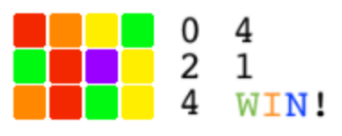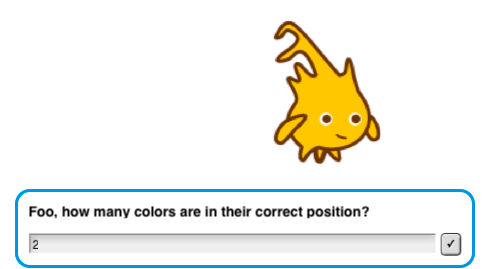If I'm not misunderstanding these instructions, I think it's confusing to have the students play with two sequences at once (which I've never seen before) and then build the project with only one sequence at a time (except for the TIF?). I think it should be one at a time in the "on paper" example too. --MF
In this project, you will begin to build the game Mastermind™. In this game, one player selects a sequence of four secret colors, and the other player tries to guess it.







 block.
block.

